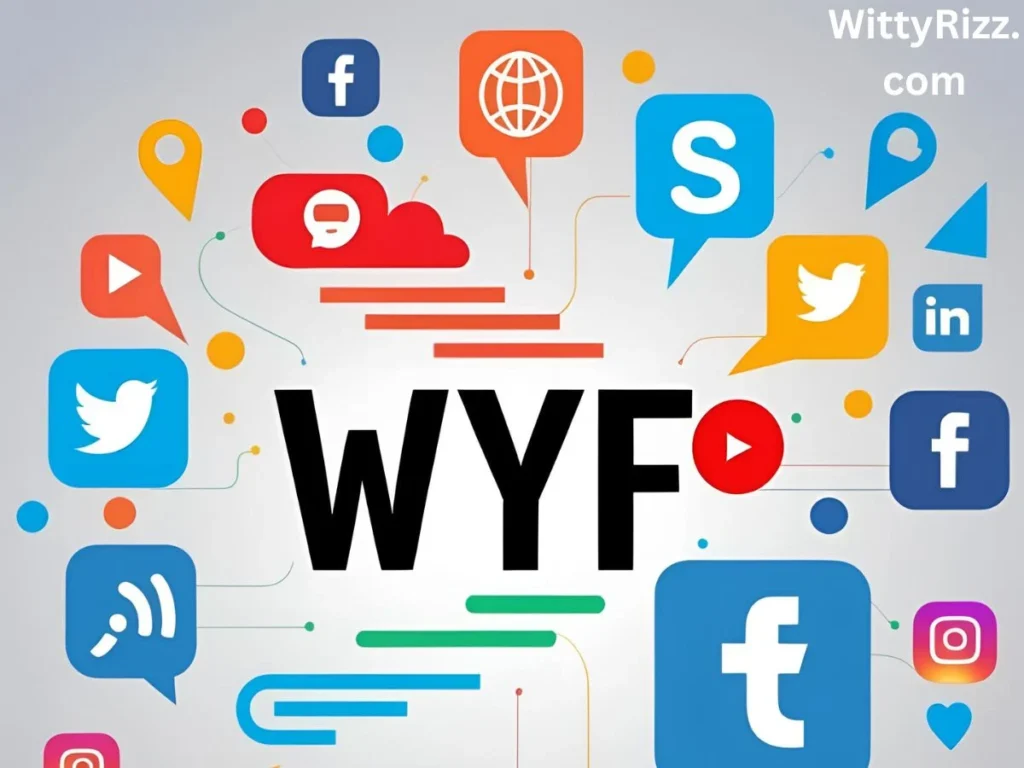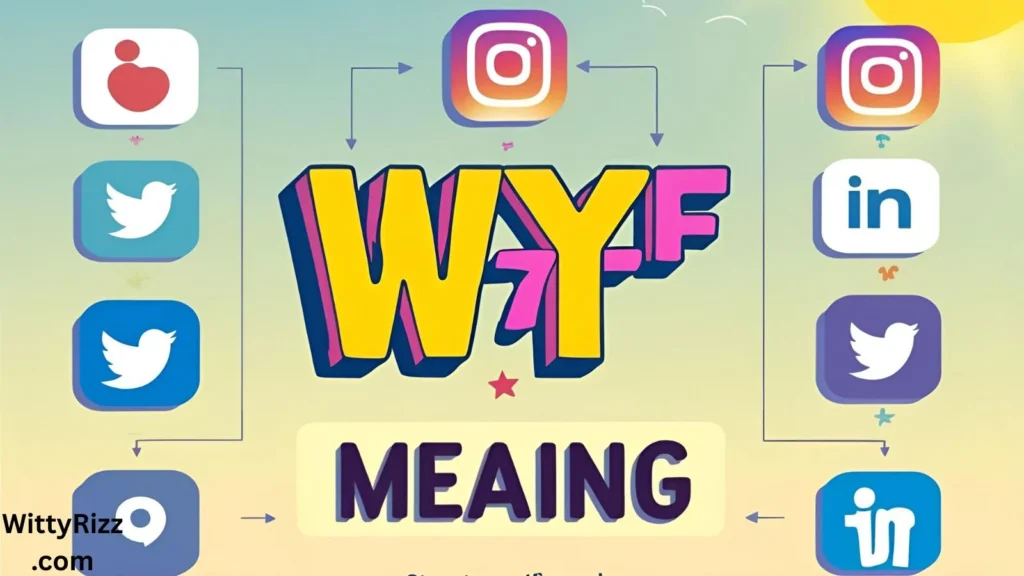In the fast-paced world of texting and social media, abbreviations rule.
One abbreviation that often pops up in direct messages or dating app conversations is WYF. But what does WYF really mean?
At a glance, WYF stands for “Where You From?” It’s a casual way to ask someone about their origin or background.
But despite its simplicity, its usage can come across in many different ways—friendly, flirtatious, or even abrupt—depending on the context and tone.
This article will break down the meaning and usage of WYF, discuss when it’s appropriate, and offer 11 superior alternatives that are more polite, professional, or engaging. By the end, you’ll know how to express interest in someone’s background without sounding off-putting or too casual.
What Does WYF Mean?

WYF is an abbreviation for “Where You From?”
It’s most commonly used in informal digital communication, especially in:
- Text messages
- Chat apps (like WhatsApp or Snapchat)
- Dating platforms (like Tinder or Bumble)
- Social media comments
It’s a shorthand that feels casual, and while that works in friendly settings, it can also seem too abrupt, especially if you’re speaking to someone you don’t know well.
When Should You Use WYF?
While WYF is commonly used among peers or in casual chats, it’s not always appropriate. Here’s when it might work:
✅ Appropriate:
- Chatting with friends or peers casually
- Conversations where informal tone is expected
- Messaging someone your age on a dating app
❌ Inappropriate:
- Professional or work-related communication
- Speaking to someone older or in a position of authority
- Situations that require a respectful or formal tone
Example:
- Casual:
“Hey, WYF?”
(Friendly, informal—works in a casual DM.) - Inappropriate:
“Dear Sir, WYF?”
(Unprofessional and abrupt.)
Why WYF Can Be Misinterpreted
WYF can come off as:
- Too direct
- Flippant or impersonal
- Flirty or even suspicious in the wrong context
Because there’s no body language or tone in text, your intention might get lost. If someone doesn’t know you well, a message like “WYF?” could feel interrogative rather than friendly.
That’s why it’s crucial to choose alternatives based on your relationship with the person and the platform you’re using.
11 Superior Alternatives to “WYF” (With Examples)
Now that we understand the risks of using WYF, let’s look at 11 better ways to ask “Where are you from?” Each version offers a unique tone—whether you’re chatting with a friend, writing a professional email, or flirting on a dating app.
1. “Where are you from?”
Tone: Neutral, polite, universal
Best for: General use
Example:
“Nice to meet you! Where are you from originally?”
✅ Works in both casual and formal conversations.
2. “Which city or country do you call home?”
Tone: Warm, inviting
Best for: Friendly or travel-related chats
Example:
“You seem to know a lot about culture. Which city or country do you call home?”
✅ Adds a personal, conversational feel.
3. “May I ask where you grew up?”
Tone: Polite and respectful
Best for: Professional or formal settings
Example:
“You mentioned you moved here recently—may I ask where you grew up?”
✅ Suggests genuine interest without sounding nosy.
4. “Where’s home for you?”
Tone: Friendly and casual
Best for: Light social chats
Example:
“Where’s home for you? I’m based in Seattle myself.”
✅ Offers warmth and openness.
5. “Where do you hail from?”
Tone: Slightly formal or old-fashioned
Best for: Written content, storytelling, or cultural exchanges
Example:
“Such a beautiful accent—where do you hail from?”
✅ Can add charm or character to a conversation.
6. “What’s your hometown?”
Tone: Neutral, conversational
Best for: Younger audiences or friendly chats
Example:
“So cool you’re into indie music. What’s your hometown?”
✅ Light and direct without being blunt.
7. “Where are you based now?”
Tone: Professional and current
Best for: Business networking or social introductions
Example:
“I’d love to collaborate—where are you based now?”
✅ Especially useful for remote work contexts.
8. “Are you originally from here?”
Tone: Curious but soft
Best for: Casual, face-to-face, or in-person style messaging
Example:
“You seem to know all the best coffee spots. Are you originally from here?”
✅ Engaging and easy-going.
9. “Where’s your background from?”
Tone: Cultural and inclusive
Best for: Conversations that dive into heritage or identity
Example:
“Your name is beautiful. Where’s your background from, if you don’t mind me asking?”
✅ Encourages deeper conversation about roots and heritage.
10. “Where did you grow up?”
Tone: Thoughtful, reflective
Best for: Meaningful conversations
Example:
“I’ve always been curious about how childhood shapes us—where did you grow up?”
✅ Invites storytelling and builds connection.
11. “Mind if I ask where you’re from?”
Tone: Very polite, respectful
Best for: Speaking with strangers or elders
Example:
“You’ve got such a warm presence—mind if I ask where you’re from?”
✅ Shows you respect boundaries and tone.
How to Choose the Best Alternative to WYF
When choosing an alternative, ask yourself:
- Who am I speaking to?
A friend, colleague, stranger, or elder? - Where am I speaking to them?
On a dating app, in a business email, or in a group chat? - What tone do I want to convey?
Warm and inviting? Respectful and professional? Light and fun?
Let’s break that down with some quick matching:
| Scenario | Recommended Alternative |
|---|---|
| Online dating | “Where’s home for you?” or “What’s your hometown?” |
| Job interview | “Where are you based now?” |
| Chatting with a friend | “Where are you from?” |
| Meeting a traveler | “Which city or country do you call home?” |
| Curious about heritage | “Where’s your background from?” |
Why Politeness and Clarity Matter
In any form of communication—especially texting—tone is everything. Using slang like WYF without context can be confusing or even feel rude. When you take the time to frame your question thoughtfully, it shows that you care about the person you’re speaking with and respect their story.
Good communication isn’t just about being understood—it’s about making the other person feel comfortable too.
Conclusion
While WYF is a quick and trendy way to ask someone where they’re from, it’s not always the best choice.
It lacks tone, and without the right context, it can come across as abrupt or overly casual.
Whenever possible, opt for more polite and engaging alternatives like “Where are you from?” or “Where did you grow up?”
These phrases open the door to real connection—and that’s what meaningful conversation is all about.
So next time you’re tempted to type WYF, pause for a second and choose a better phrase. You’ll sound more thoughtful, more respectful, and ultimately, more human.

